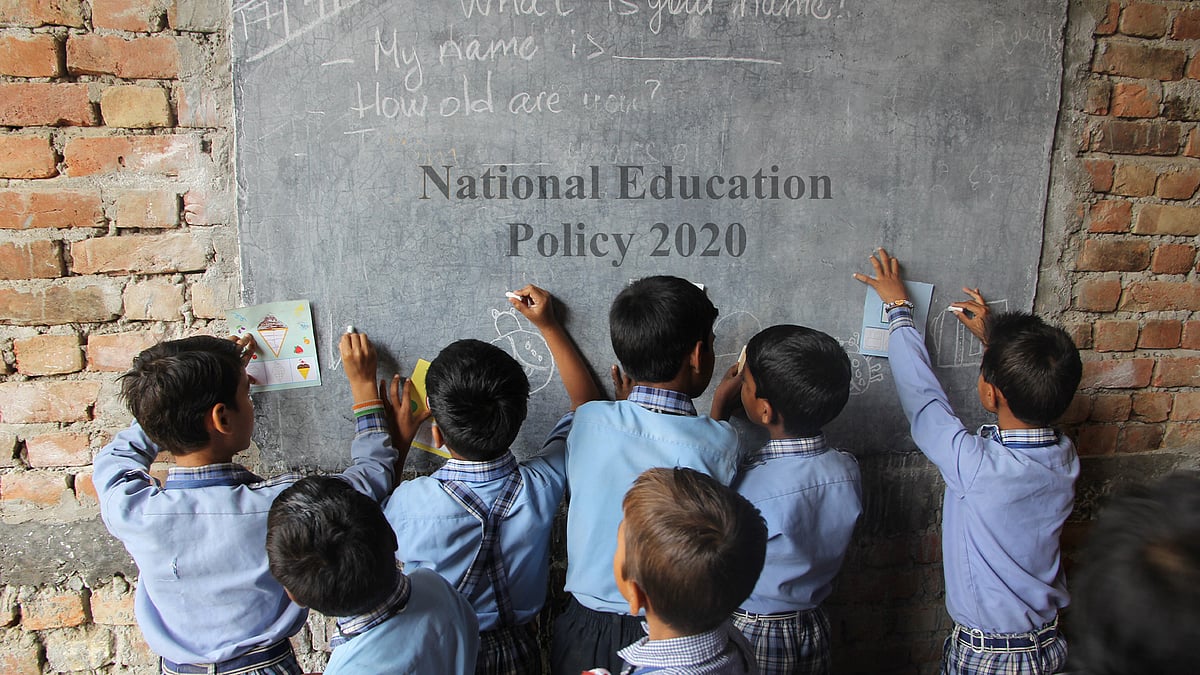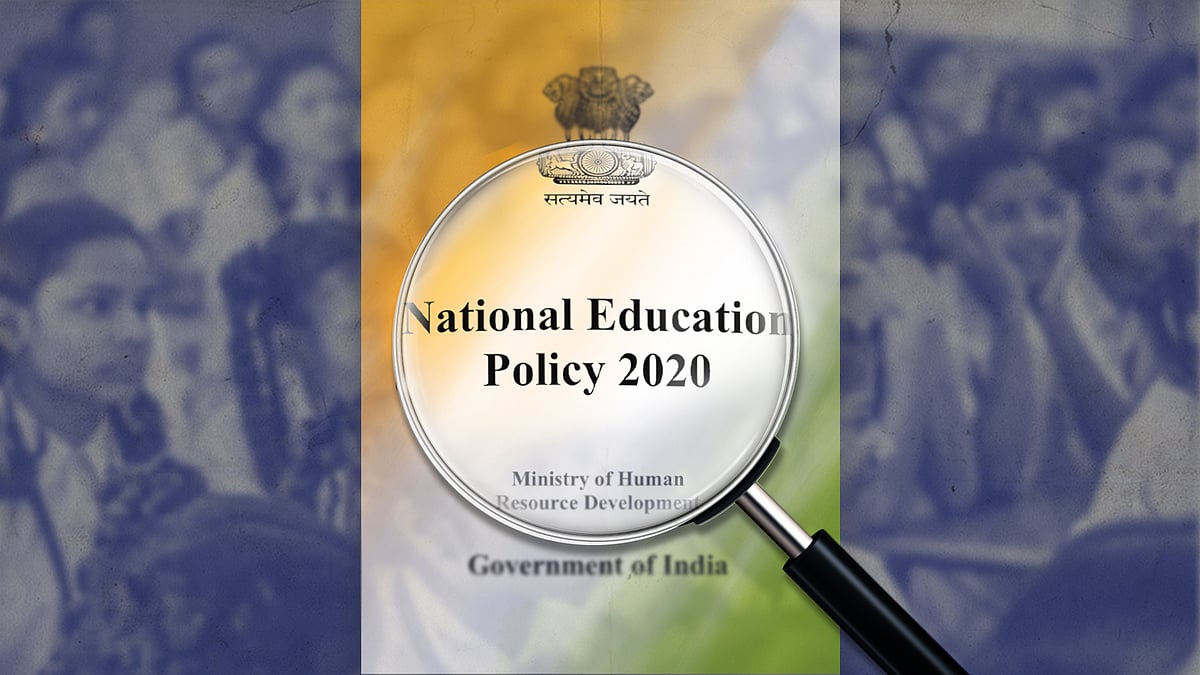Operation Vishwaguru: How NEP 2020 aims to make India a ‘global study destination’
By redefining what a university is, to begin with.
In case you hadn’t noticed, India is an aspirational country full of aspirational people. In our hearts we know that we are not good enough, that we can’t beat those liberal western powers – which we love to hate – so a few among us go to live in that shiny part of the world. Our government has finally figured out that one big reason why this happens is our horrible higher education system.
Not only have they figured it out, our clever government now wants to pull a reverse Uno card on the whole thing. They want to make India a “global study destination” with the goal of “internationalisation at home”. And the National Education Policy 2020, which was released recently, offers a host of new solutions to achieve this.
How good are these proposed solutions, though? Well, if you read the policy document, you will see that the government is trying to take steps in the right direction. There are multiple changes coming our way in the near future when it comes to higher education and we better be ready for them.
The ultimate goal of our beloved country after all is to become a vishwaguru, aka teacher of the world.
Multidisciplinary goodness
One key feature of this new policy is the changes in the structure of how higher education is offered to students. Till now, students going for higher education were pretty much divided into the buckets of science, commerce, humanities, medicine and law, with each of the buckets containing their set subjects with no overlap.
The new approach is to “end the fragmentation of higher education” by transforming higher education institutions, or HEIs, into large multidisciplinary universities, colleges, and HEI clusters or knowledge hubs, each of which will aim to have 3,000 or more students. Basically, these institutions will offer a range of courses across disciplines – and do away this bucket business completely.
You would think this new approach is being taken because the Ivy League and other in-demand universities have such a model, and we want India to join the club. But you would be wrong because, according to the NEP, we have already done all this before it was cool.
“The ancient Indian universities Takshashila, Nalanda, Vallabhi, and Vikramshila, which had thousands of students from India and the world studying in vibrant multidisciplinary environments, amply demonstrated the type of great success that large multidisciplinary research and teaching universities could bring. India urgently needs to bring back this great Indian tradition to create well-rounded and innovative individuals, and which is already transforming other countries educationally and economically.”
We, true hipster boys.
Here’s how it’s going to work. To begin with, the government aims to redefine what a university is. The NEP says a university will mean a multidisciplinary institution that offers undergraduate and graduate programmes. This new definition of university will allow for a spectrum of institutions with different focus areas in the country – instead of on the basis of streams, the distinction will mainly be between teaching and research institutions on one hand and autonomous degree-granting universities on the other.
All autonomous degree-granting institutions will be encouraged to become teaching or research institutions after going through an accreditation process. The aim is to turn all HEIs into multidisciplinary institutions by 2030 and increase student enrolment to desired levels. The policy states that the gross enrolment ratio in higher education should go up from 26.3 percent, as of 2018, to 50 percent by 2035.
What is more, the policy document states that all HEIs will be regulated by a common body known as the Higher Education Council of India, which will replace both the UGC and the AICTE. Medical and legal education will remain outside of its ambit, though. This will definitely centralise higher education further and make it inefficient. But then, if colleges are granted autonomy in deciding their course material and certification process, the HECI will only function as an overarching regulatory body.
In the new system, undergraduate degrees will be of three or four years, with multiple exit options during this period. Each course will have appropriate certifications for every student who exits midway. This means that while the degree will be given only on the completion of the entire duration of the course, those who drop out midway will still have a certificate to show for their effort rather than nothing as is the case now.
When it comes to teachers, the NEP says they will have the freedom to design their own curricular within the “approved framework”. Multidisciplinary universities will need multi-talented teachers, eh?
There is also a plan to put in place a regulatory system to ensure only sound, multidisciplinary teacher education programmes are in place by 2030.
“The Regulatory System shall be empowered to take stringent action against substandard and dysfunctional teacher education institutions that do not meet basic educational criteria, after giving one year for the remedy of the breaches. By 2030, only educationally sound, multidisciplinary, and integrated teacher education programmes shall be in force.”
Don’t know about you, but whenever I hear the words “regulatory system”, I imagine corrupt babus lazily playing with a stamp while a person sits in front of them whispering, “Tell me what you want. I’ll give you anything! Please clear this!”
Another interesting idea in the NEP is encouraging HEIs to help students do internships with local industries, businesses, artists, craftsmen, although how exactly this will be done is still up in the air. We will find out when the policy is implemented, pretty much.
Now, you might think, “Hey, all of this sounds pretty good to me. Modern, forward-looking, focused on making our citizens better quality cogs in the great economic machine. Sounds about right!”
Yes, it does sound right. But then the jargon enters the building. Particularly, stuff like this:
“The development of humanistic, ethical, Constitutional, and universal human values of truth (satya), righteous conduct (dharma), peace (shanti), love (prem), nonviolence (ahimsa), scientific temper, citizenship values, and also life-skills; lessons in seva/service and participation in community service programmes will be considered an integral part of a holistic education.”
I am yet to figure out exactly how these “values” might be fed to students so that they engage in holistic education. It’s great that these words are being bandied about, but just one look around you will surely leave you wondering if they have been thrown in just for effect.
Even when it comes to teachers, the policy documents contains stuff like this:
“Teachers must be grounded in Indian values, languages, knowledge, ethos, and traditions including tribal traditions, while also being well-versed in the latest advances in education and pedagogy.”
So, the overall idea is to be modern while sticking to old ways and traditions? It’s all very confusing. On the one hand, the NEP talks about turning our institutions into world class universities that would attract a diverse bunch of students from all over the world and have amazing multi-talented teachers. On the other, there are these throwaway lines which are basically #sanskaar.
Stick to one. You either want to go with the globalisation push or you want to isolate your country and stick to local “traditions and values”. You simply can’t have both, especially when it comes to education. What this attitude will likely lead to is a lot of conflict around universities.
Already, there’s much hatred being thrown at institutions such as the Jawaharlal Nehru University, which is known for its global and multidisciplinary approach and not adhering to Indian “values and traditions”. A BJP leader even went to the university some years ago to count condoms. If you look at the attitude of the present government towards universities and the utter contempt being shown towards the students, then a policy which uses soothing jargon and dreams about attracting international students seems extremely out of place.
The NEP sets ambitious goals of increasing higher education enrolment, making universities multidisciplinary and research oriented. But these are all lofty ideas that would require able, open-minded administrators to execute. And recent experience shows that the incumbent administration is anything but open.
Anna Priyadarshini helped research this report.
This is the third part of our series on National Education Policy 2020. Read the first and second parts.
 Gotta catch 'em young: What NEP 2020 envisions for school education
Gotta catch 'em young: What NEP 2020 envisions for school education Beyond jargon and keywords, what is the NEP 2020 and why do we need it?
Beyond jargon and keywords, what is the NEP 2020 and why do we need it?
The media industry is in crisis. Journalists, more than ever, need your support. You can support independent media by paying to keep news free. Because when the public pays, the public is served and when the advertiser pays, the advertiser is served. Subscribe to Newslaundry today.
